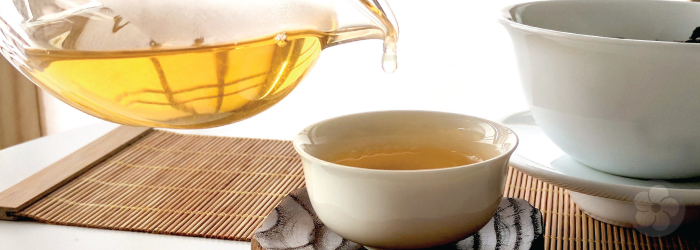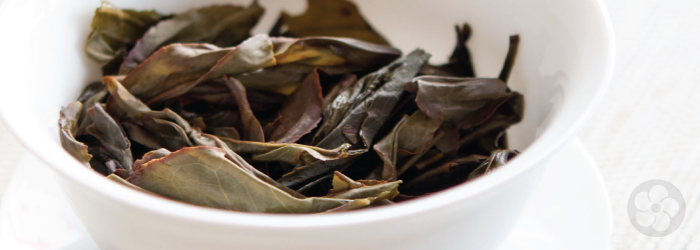Tasting Notes: Bitterness vs. Astringency

Tea and wine have a lot in common. High quality examples of both are recognized by varieties, or environmentally specialized sub-categories of a single plant species. Both depend on factors of terroir, including soil quality and climate, to develop ideal flavor profiles. And both require skilled craftsmanship and attention to detail in order to meet the high standards of connoisseurs.
Find out more about our standards for judging high quality tea >>
Though the resulting products are very different, there are also parallels between flavor quality, and the way that the final cup is judged. While each presents a huge range of flavor profiles, bitterness and astringency are often cited in tasting notes for both, carrying inherent subtext about the overall quality of the final product.
Learn how to make sense of tasting notes (and write your own) >>
These two characteristics are closely associated and often conflated, especially by inexperienced tasters. Yet they stem from totally different molecular compounds, in both wine and tea leaves. So how do experts distinguish between these distinct flavor components, and what do they indicate about the quality of a tea?
Find out how we test the quality of every tea with gong fu cha in this video:
Bitterness
One of the five main categories of flavor, sensitivity to bitterness prevented our hunter-gatherer ancestors from consuming toxic or poisonous substances. In tea, bitterness also serves as a natural deterrent to pests, protecting the plant from the threat of common insects. Some of the bitter compounds in tea are thought to be methylxanthines like caffeine, along with other components.
Learn more about caffeine in tea >>
Tea plants naturally produce more bitter compounds in leaves that are more at risk from pests, including those that grow to a large size during the summer months, or in warm climates near sea level, where insects are more plentiful. Bitterness is released more slowly from whole leaves than the volatile substances that read as sweet, floral, or fresh on our palate, but leaves that are chopped into small pieces release bitterness into the cup more quickly.
Learn more about what makes tea bitter >>
Much of the long history of tea cultivation and consumption has circled around reducing the amount of bitterness in the cup, from cultivating tea gardens at high elevations, to selecting young leaves in the early spring, to specific brewing methods like those used in gong fu cha. Overall, intense bitterness is considered a sign of low quality tea, or is expected to be offset with the addition of milk and sugar after brewing.
Learn how to avoid bitterness by paying attention to harvest date in this video:
Astringency
Rather than a flavor perceived by the taste buds, astringency is actually a drying feeling in the mouth. Thus, it is not limited to sensation on the tongue, but also in the cheeks and throat, and builds over the course of a cup, intensifying with each sip. For this reason, astringency is often favored by experienced tea drinkers (as well as with wine tasters) because it extends the perceived duration of flavor. In tea, the flavor that lasts long after the tea is swallowed is called the finish or hui gan, and is highly valued.
Learn more about how hui gan contributes to high quality flavor >>
In addition, astringency is usually attributed to polyphenols, including EGCG, the subject of much research concerning the antioxidant effects of tea. These molecules are derived from amino acids with exposure to sunlight, meaning that tea leaves that absorb more sun will have more of them, and therefore more astringency.
This can overlap with conditions that cause bitterness, like low elevations and summer harvests, which helps to explain the association between the two characteristics. But astringency can also come with flavor intensity, in examples like oolong teas from the Phoenix Mountains, which are grown on old grove trees.
Find out more about cultivating astringency in dan cong oolong teas >>
There are many different types of polyphenols within a tea leaf. One of the most common and commonly studied types are called flavanols, which are sometimes nicknamed as tannins. Tannins are found in most plants, including the skins of wine grapes, and are often attributed as the primary source of astringency. Teas and wines that cause dryness in the mouth and have a long-lasting finish are often said to be high in tannins.
Learn more about tannins in tea >>
In short, for some styles of tea, astringency is not only allowable, but even desired and cultivated. By contrast, bitterness is usually a sign of mass production, and is rarely associated with quality tea leaves. Wine drinkers are probably not surprised.
Do you like your teas sweet and smooth, or with a bit of bite? Let us know how you feel about bitterness and astringency in the comments below!
Sign up for our newsletter to get blog updates in your inbox!






Comments on this post (0)